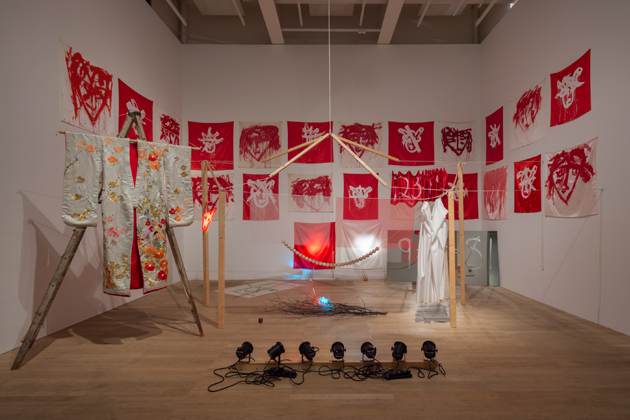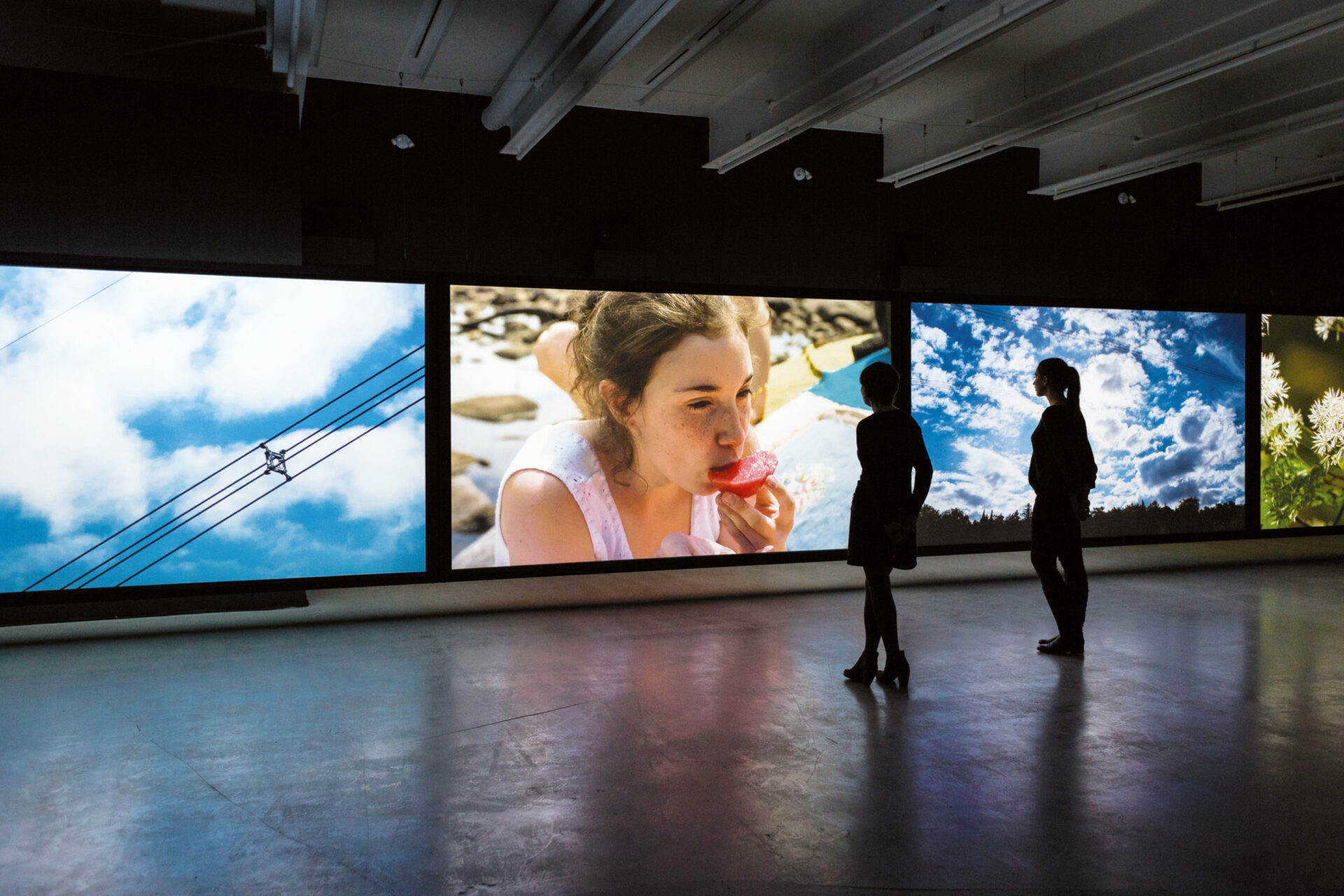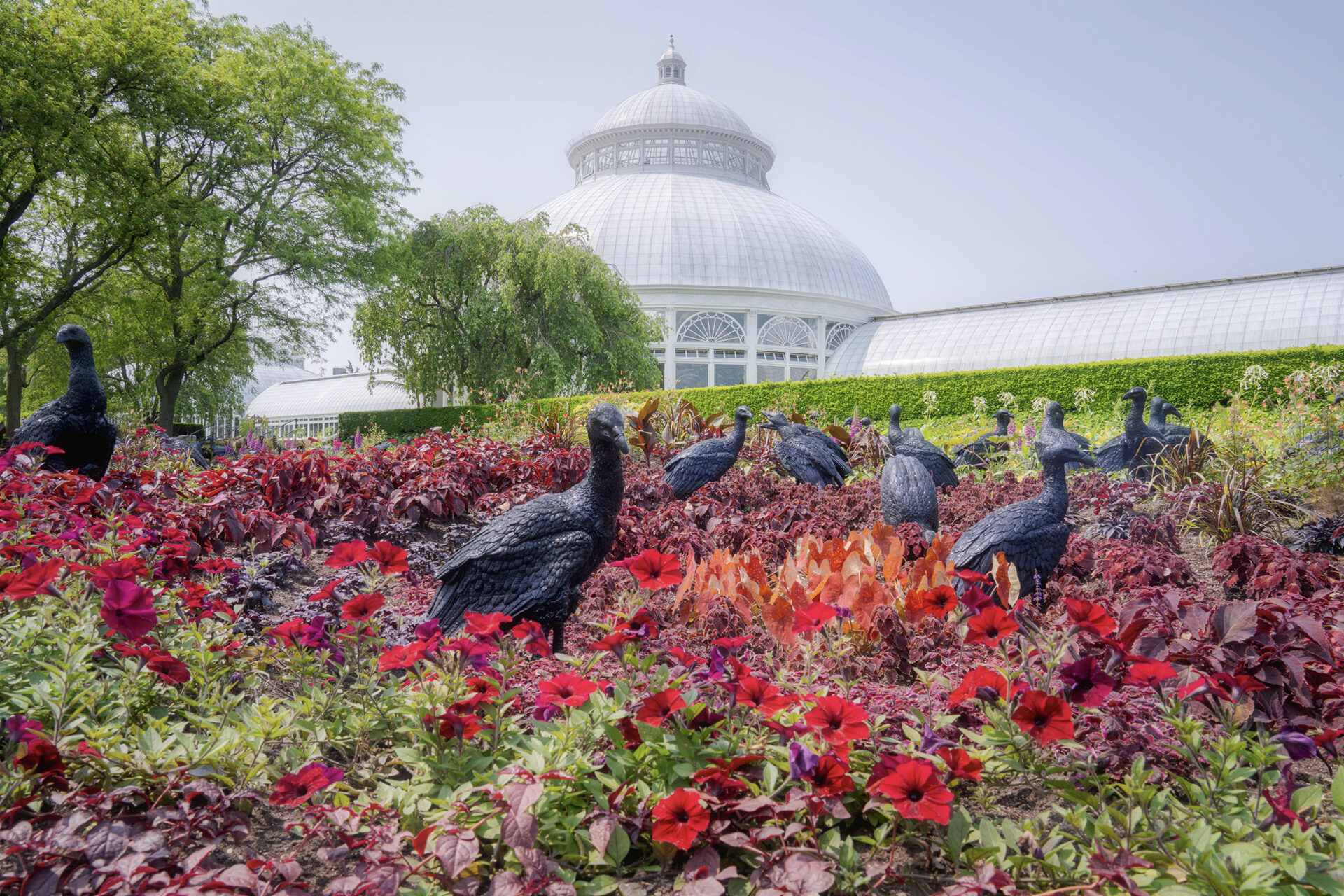
Photo: Seraphina Neville
March 14–August 5, 2018
[En anglais] “I always thought the activity of putting one object next to another was like making a visual poem,” states Joan Jonas on her artistic process, in the wall text that opens Tate Modern’s impressive, if at times fractured retrospective of the octogenarian American artist. This methodology can be seen as central to Jonas’s oeuvre as a whole, as well as to the exhibition display at Tate. Juxtaposition, collage, combining, mirroring, recombining, collapsing, and contrasting the haphazard, to effects magical, strange, and jarring: all are employed as modes to tease out unexpected meaning and evoke sets of interlinking, idiosyncratic references. Recurrent motifs are masks, mirrors, animal costumes, and atavistic tokens—objects collected in places near and far-flung. These things are present in her performances and films, as well as on display in the gallery—props that act as indices to aspects of Jonas’s practice, as well as portals to ritualistic, otherworldly spaces. The artist herself appears in multiple guises, face covered in different masks, her identity always somehow obscured or temporally distant: a delay between the maker and the made, the transmitted and the received.
Jonas, perhaps best known for her pioneering early video and performance pieces—a fixture of the avant-garde downtown New York scene of the 1960s and 70s—has long been interested in the relationships between storytelling, magic, theatre, and animism; as well as the history of women cast as outsiders and oddities (witches or those who are able to channel external forces to access different modes of understanding and making manifest). A sense of magical thinking is incarnate in the artist’s complex and intricate multipart installations, an expansive form in which she has been working for the past few decades. A work might begin as a performance, a lecture, a drawing, a video, or a film—something discrete and contained—to which Jonas adds an accretion of other layers. The original form of the work is merely a starting place for what ultimately becomes a multimedia palimpsest of additional references that stretch across forms, multiplying to surround a viewer in three dimensions. If this sounds complicated, difficult to imagine and perhaps to grasp in full, that’s because it is. Jonas’s sprawling installations, like much of her exhibition at Tate, is spellbinding and transporting, breathtakingly stunning and intelligent, as well as hermetic and arcane—with works often falling to either side of this divide, rather than striking what one might hope could be a challenging but generous balance between the two.
Créez-vous un compte gratuit ou connectez-vous pour lire la rubrique complète !
Mon Compte


